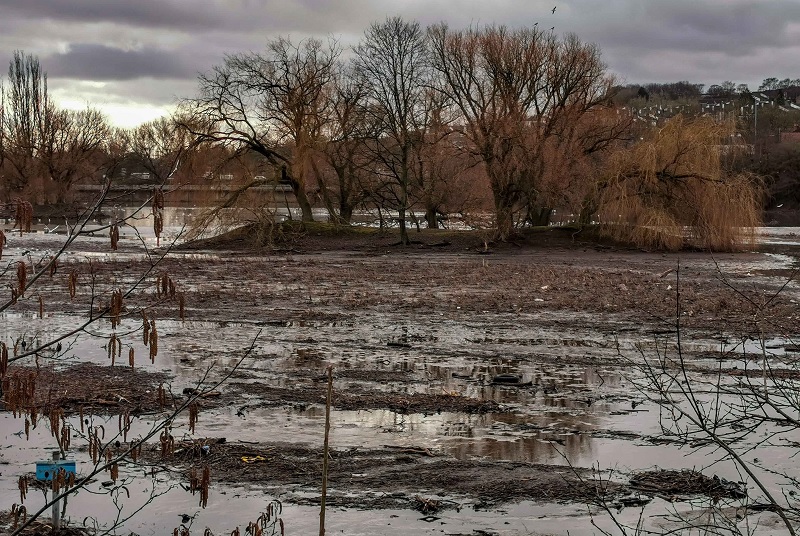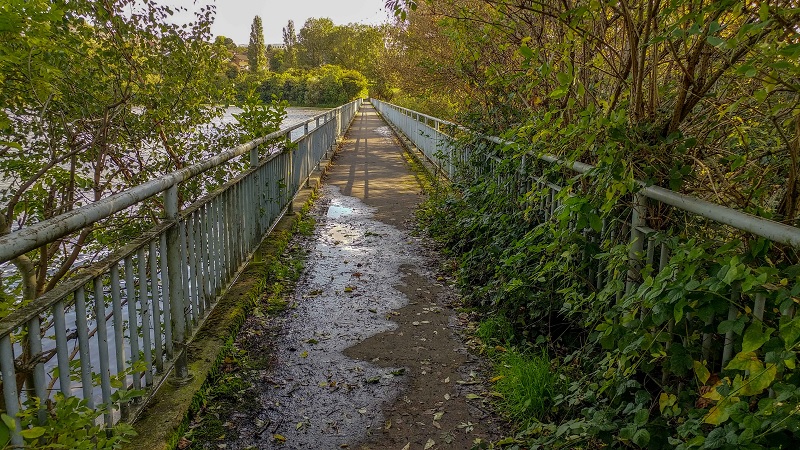Concerns have been raised over the impact on wildlife after Yorkshire Water began dredging 100 tonnes of silt at Farnley Reservoir. Birdwatcher JAMIE BRASS has presented an argument for better nature conservation and a different approach to flooding and greenspaces in the valley…
Local greenspaces became just about the only place to go during lockdown as people looked for an escape from feelings of isolation and anxiety of the pandemic.
Many of the national parks were inundated with cars as people looked for the opportunity to escape cabin fever prompting calls for people to stay local. The upside, perhaps was people appreciating their local area and enjoying the natural world.
Not everyone can boast having a nature reserve on their doorstep, particularly in the more urban areas of Leeds, but those lucky enough have been to their local parks and woodlands more than ever before.

One such place is Farnley Balancing Reservoir. While opinion is divided on its status as a ‘beauty spot’ there is no doubt that most who visit do so to see the wildlife and the sheer variety of birds from the promenade or the platform off Butt Lane.
There are few other places in West Leeds where people of all ages and physical ability are able to connect with nature as readily.
Yet the ‘Res’ was not built with this in mind. In its name Farnley Balancing Reservoir gives away its purpose of holding water back from the lower Wortley Valley and to protect homes and business from flooding.
That would have been a pre-condition of further urbanisation, the building of Stanningley by-pass and suburban housing estates. It’s fair to say the Wortley Valley was changed at lot over the past 100 years.
And while it’s provided many a good home and shortened the journey to work, wildlife in the valley has not fared as well.

Years of neglect, and erosion of the soils of Farnley Becks’ catchment area, have left great deposits of mud and detritus from the streets and back-gardens, leaving the impression of a pigsty when the water is low at the reservoir.
However, those with keen eyes, or better still a pair of binoculars, see treasure among the random household goods, stalking the shallows and wide mud flats.
Green Sandpiper, Ruff, and Little Ringed Plover are some of the rarer birds that turn up, while hundreds of Lapwings and wildfowl feed in the shallow pools and channels.
The Lapwings are remarkable not just because of rapid population decline in England (they are Red listed for ‘conservation concern’), but because of their dazzling flight displays and ‘peewit’ call; completely at odds with the sound of screeching brakes and parping horns on the Leeds ring road.

Over the ridge at Bramley and into the Aire Valley, Rodley Nature Reserve has been closed during successive lockdowns, but work to enhance the wetland habitat has continued, re-landscaping the marsh area to attract wading birds, by recreating nature’s patterns.
The aim is to bring wetland wildlife back to the Leeds area with a focus on urban areas so people can experience the wild nearer to home.
Elsewhere in Leeds at Killingbeck Meadows reserve, the council and its partners are working with nature, planting trees and building ponds to attract wildlife and hold back flood waters to protect communities downstream. Making spaces for nature and adapting to climate change is a fantastic vision for our city. The currency of success will be well-being, nature, and resilience.
So it’s a pity the same thinking and practise has not been applied at Farnley Res. The diversity of wildlife so desired has been restored there at no cost, simply by process of what some might call ‘rewilding.’ In other words leaving space for nature’s own pattern.
So far as its intended purpose, Yorkshire Water have confirmed in a recent press release that it continues to protect communities downstream at Lower Wortley.
This – along with concerns for wildlife at the start of breeding season – has left some locals puzzling the motive and timing of the decision by Yorkshire Water to dredge silt from the reservoir.
The decision appears something of an ‘own goal’ for Yorkshire Water’s policy on restoring nature and lacks the vision that has been applied elsewhere in Leeds.
Farnley Res cannot be looked on as the answer to flooding issues in the valley as climate change takes hold.
New designs will be needed to ensure future prosperity in the valleys around Farnley. Keeping people safe will always come first, but the pandemic has perhaps reminded us that our wellbeing and enjoyment of nature is important too.
A new vision is called for that doesn’t prioritise one thing or another, it must look out for people and work with nature to ensure that both can flourish.

Yorkshire Water: ‘Balanced decision’
A Yorkshire Water spokesperson responded to Mr Brass and said:
“Where possible Yorkshire Water seeks to maximise biodiversity on its estate, but on sites such as Farnley we have to make a balanced decision weighing this against maintaining the storm lake’s primary function.
“Before conducting desilting work an Environmental Impact Assessment was carried out and biodiversity specialists at Yorkshire Water were involved in the planning of the project. An external ecologist is monitoring the progress of the work to ensure bird nesting sites are not affected. The desilting activity will leave areas of silt to maintain the habitat for wading birds and other wildlife.
“We are continuing to work with the Environment Agency and Leeds City Council to develop longer-term plans for the storm lake.”
Desilting work at the reservoir will be completed tomorrow and contractors will be coming off site.
Read more of WLD’s coverage of Farnley Reservoir here.

